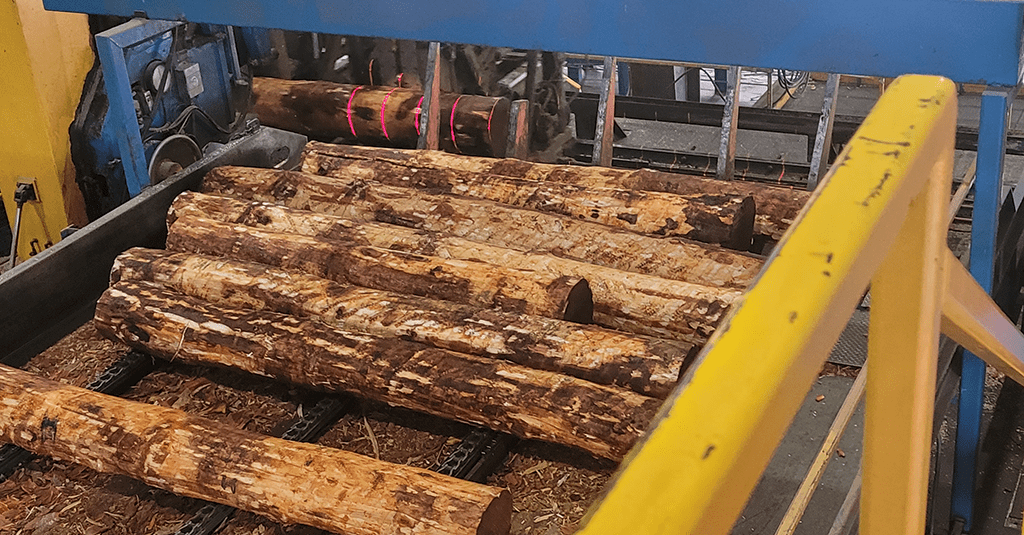A growing library of research points to the multiple health benefits of using wood for structural and decorative elements of interior design.
A groundbreaking study by the University of British Columbia, for example, measured wood’s ability to reduce stress levels in an office setting. “This study provides evidence that wood provides stress-reducing effects similar to the well-studied effect of exposure to nature in the field of environmental psychology,” the author concluded. “The practical implication of this effect is that wood may be able to be applied indoors to provide stress reduction,” including in offices, hospitals, schools and other built environments.
Another study, this one commissioned by Forest and Wood Products Australia, concluded that the presence of wood improved office employees’ physical and mental well-being resulting in higher levels of concentration, improved mood and increased productivity. “Workers in work environments with exposed wood feel more connected to nature and have more positive associations with their workplace,” the study noted.
“This study provides evidence that wood provides stress-reducing effects similar to the well-studied effect of exposure to nature in the field of environmental psychology”
The biophilic design movement is afoot.
Wood products manufacturers and suppliers would be wise to pay attention the latest movement in green building.
The case for using wood indoors for its wellness properties has caught on with architects and designers as part of a broader trend known as biophilic design. Indeed, biophilic design criteria, including those governing interior flooring, furniture and millwork products, are the driving force behind the International WELL Building Institute’s (IWBI) WELL Building Standard. Created in 2014, the IWBI has launched a series of TV commercials directed by Spike Lee featuring the likes of Robert DeNiro, Lady Gaga and Jennifer Lopez urging viewers to “look for the WELL Health-Safety Seal.”
What gives the IWPI standards legs among the A&D community is its strong ties to the now-familiar LEED credentialing system. Not only is the IWPI using the Green Building Council (GBC) as its third-party auditor, its CEO Rick Fedrizzi, was a co-founder of the GBC. Whereas LEED puts great emphasis on the environmental and sustainability aspects of materials used in buildings, the WELL Building Standard takes a holistic approach to occupant health and safety. More than 3,000 T-Mobile retail stores, Yankee Stadium and the American Society of Interior Designers’ headquarters are just a few of the entities that have secured the WELL Health-Safety Seal.
What is biophilic design?
Biophilic stems from the Greek word biophilia, meaning “the love of living things.” The overarching philosophy of incorporating biophilic design in built environments is to enhance occupant well-being by bringing nature’s innate goodness indoors, including incorporating natural elements like natural light, plants and exposed wood.
While the COVID-19 pandemic has accelerated the biophilic design movement, there has long been good reason to address building health. A 2001 study funded by the U.S. Environmental Protection Agency indicated that Americans spend 87% of their time indoors and that does not count time seated in a car. Biophilic design has also caught on as a backlash of sorts to the root causes of sick building syndrome that have resulted in the government-mandated abatement of toxic materials like asbestos and lead-based paints.
Why wood?
Wood fills the bill as well or better than any building material when it comes to biophilic design’s basic premise to connect building occupants with nature and as a result create built environments that are healthier and more aesthetically pleasing. After all, what building material is more natural than wood?
Hardwoods, in particular, check off many boxes that measure up to biophilic design criteria. These desired attributes include:
- The sight of woodgrain evokes standing in a forest and all of the mental and physical health benefits that humans associate with that experience.
- Wood is hypoallergenic. A report by the EPA noted that wood floors, compared to other flooring options, minimize the accumulation of dust, mold, and animal dander, thus improving overall indoor air quality.
- Wood contributes to a more tranquil indoor environment because of its sound absorption properties.
- Wood is a multi-sensory material. In addition to sight and sound, wood is also capable of influencing two of the other five basic senses: touch
and smell.
Some friendly advice.
Wood products companies working with clients on biophilic design projects should consider the following best practices:
- Use FSC-certified hardwoods. Not only does doing so make a strong sustainability statement, it allows the project to qualify for LEED and WELL Building credits.
- Prioritize the use of lighter woods over darker species to brighten the space.
- Avoid paints and dark stains. Use clear finishes to expose the grain pattern while still protecting the wood from normal wear and tear.
- Create visual breaks when using wood for wall treatments.
Resources
Wood + Well-Being: ThinkWood’s website summarizes and links a host of studies demonstrating the health benefits of using wood in built environments.
https://www.thinkwood.com/benefits-of-using-wood/wood-and-well-being
International WELL Building Institute’s website explains its WELL Building Standards, including rationale, criteria and WELL Health-Safety Seal. www.wellcertified.com
University of BC study https://open.library.ubc.ca/soa/cIRcle/collections/ubctheses/24/items/1.0071305
Forest & Wood Products Australia study www.fwpa.com.au
Share This Post!









